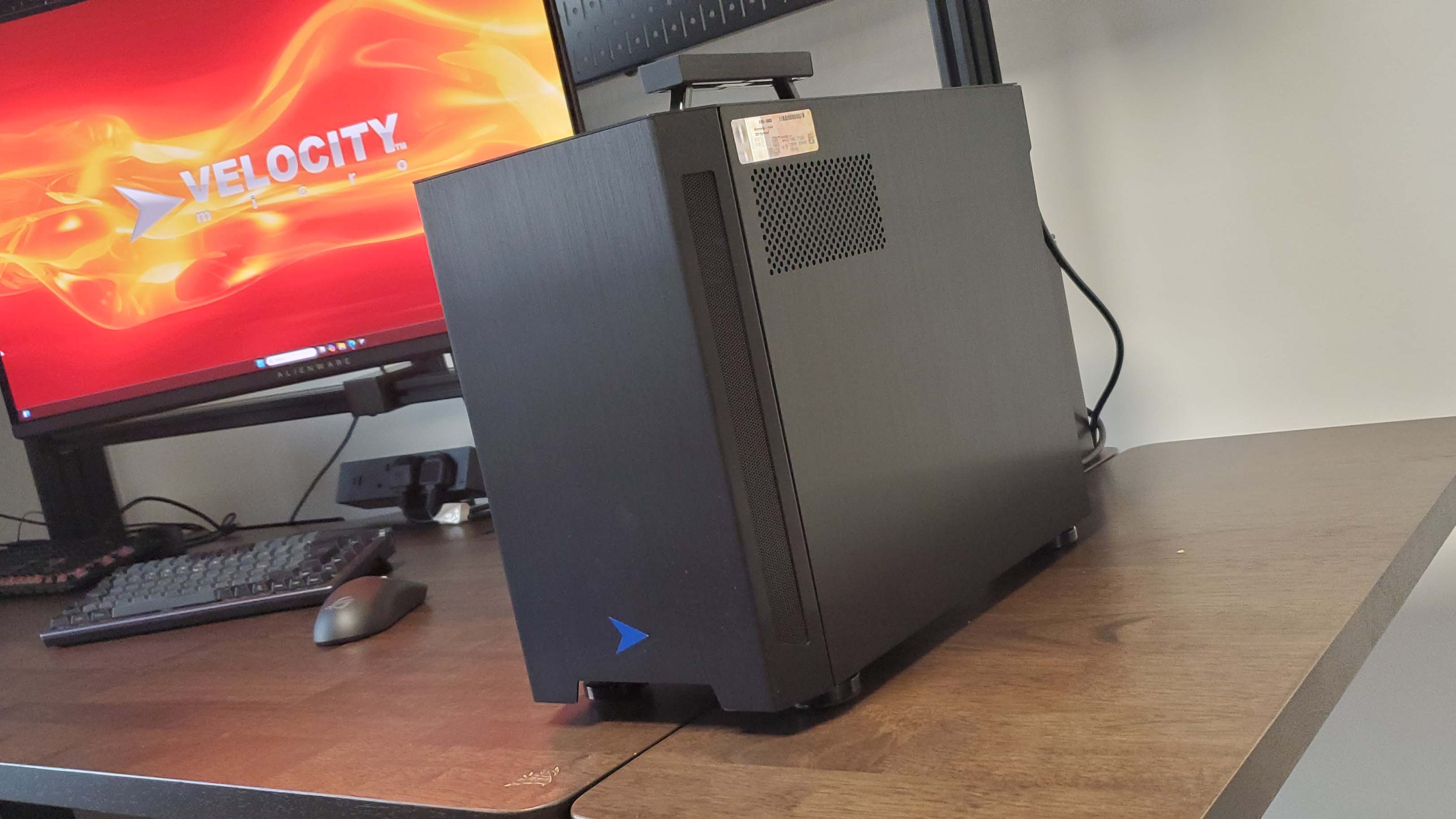Our Verdict
The Raptor ES40 is a really well-specced, well-built compact gaming PC with but one real flaw. That cheap A630I motherboard holds this otherwise premium build back from complete greatness.
For
- Tidy build
- Great performance
- Remarkably cool
- Space to upgrade
Against
- A B650 motherboard would have been a better choice
- Only one M.2 SSD slot
PC Gamer's got your back
I love a mini PC. There is something so compelling and utterly satisfying about a gaming PC with the power of a massive tower condensed into something with a footprint not much larger than a shoebox. That's what Velocity Micro is offering with its Raptor ES40 gaming PC; a compact system that can travel with you as a jobbing professional gamer or just someone who might be moving around more than most. Or should you just prefer something that doesn't dominate your desktop like a full tower, but allows you to dominate in the latest games.
But, y'know, if you do want to travel with it, it even comes with a carry handle. Yes, the custom Velocity Micro NX2 mini-ITX chassis comes with its own pop-out carry handle, which definitely feels robust enough to support its weight. But, let's be honest, that's just a thing you're going to find yourself fiddling around with (handle goes up, handle goes down) more than actually using on the reg.
The chassis itself actually feels very Lian-Li, all black brushed aluminium and clean lines, but mercifully without the machined edges that I always end up shredding my fingers on with Lian-Li cases. Its tool-less design means you can pull both the solid and tempered glass side panels off with ease and the simple layout makes it easy to get access to the insides for upgrades, etc.
There's also a maybe surprising amount of space inside for your graphics card, too. I did try to get an RTX 4090 in there, but that was a little over-ambitious. I reckon you could just squeeze one in there if you removed the front 120 mm fan first, but suffice to say you'll be able to get cards under 300 mm in length into this system when it does come to a GPU upgrade.
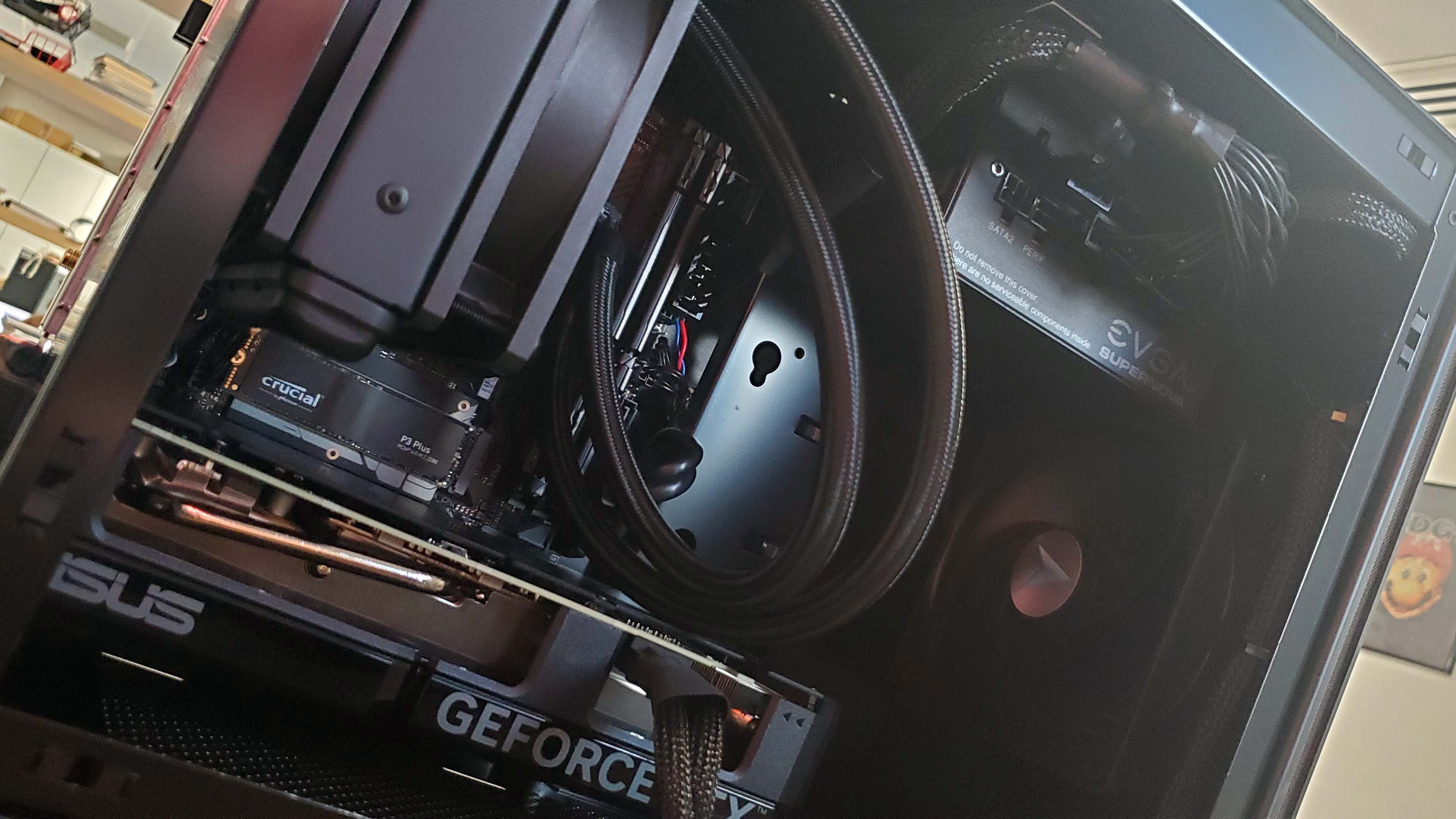
CPU: AMD Ryzen 7 9700X
Motherboard: Gigabyte A620I
RAM: 32 GB (2x 16 GB) DDR5-5200
GPU: Asus RTX 4070 Super Dual
Storage: 2 TB Crucial P3 Plus
PSU: EVGA 750 W SFX
Chassis: Velocity Micro NX2
Price: $2,519
But what I've gone in there in my review machine, however, is already something fairly spicy, and is actually the top-end of what Velocity Micro will ship the Raptor ES40 with. We've got the RTX 4070 Super in there at the moment, an Asus Dual version, which comfortably fits within the mini ITX confines without looking like it's going to struggle for breath.
The intake pulls air in from the front and blows it across the back of the GPU, over the RAM, SSD, and VRMs and through the push/pull configuration of the120 mm liquid CPU cooler, which vents out the rear of the chassis. It's impressive, in a chassis of this size, that the cooling is actually so effective.
Compared with the iBuyPower V40 Valorant machine we've recently reviewed, which comes in a larger case with a 240 mm CPU cooler, the Raptor ES40 manages to keep both GPU and processor running cooler. That's kinda counter to what you might otherwise expect given their relative sizes.
Alongside that Nvidia GPU, a graphics card made for 1440p gaming, you also get one of the latest Zen 5 processors, the Ryzen 7 9700X. It was actually one of our favorite Ryzen 9000-series chips and the sequel to one of our favorite Ryzen 7000-series CPUs, too. That's a resolutely eight-core, 16-thread processor which delivers great all-round performance with a mighty efficient power core, too.
My only concern with this setup lies in what motherboard that processor has been jammed into. With the price of this build set at over $2,500 I would have much rather had something with a bit more about it than a basic AMD A620 chipset board. The Gigabyte A620I AX is a decent budget mini ITX motherboard, and we were fairly impressed with its overall performance when we reviewed it ourselves, but it's certainly not the most feature rich.
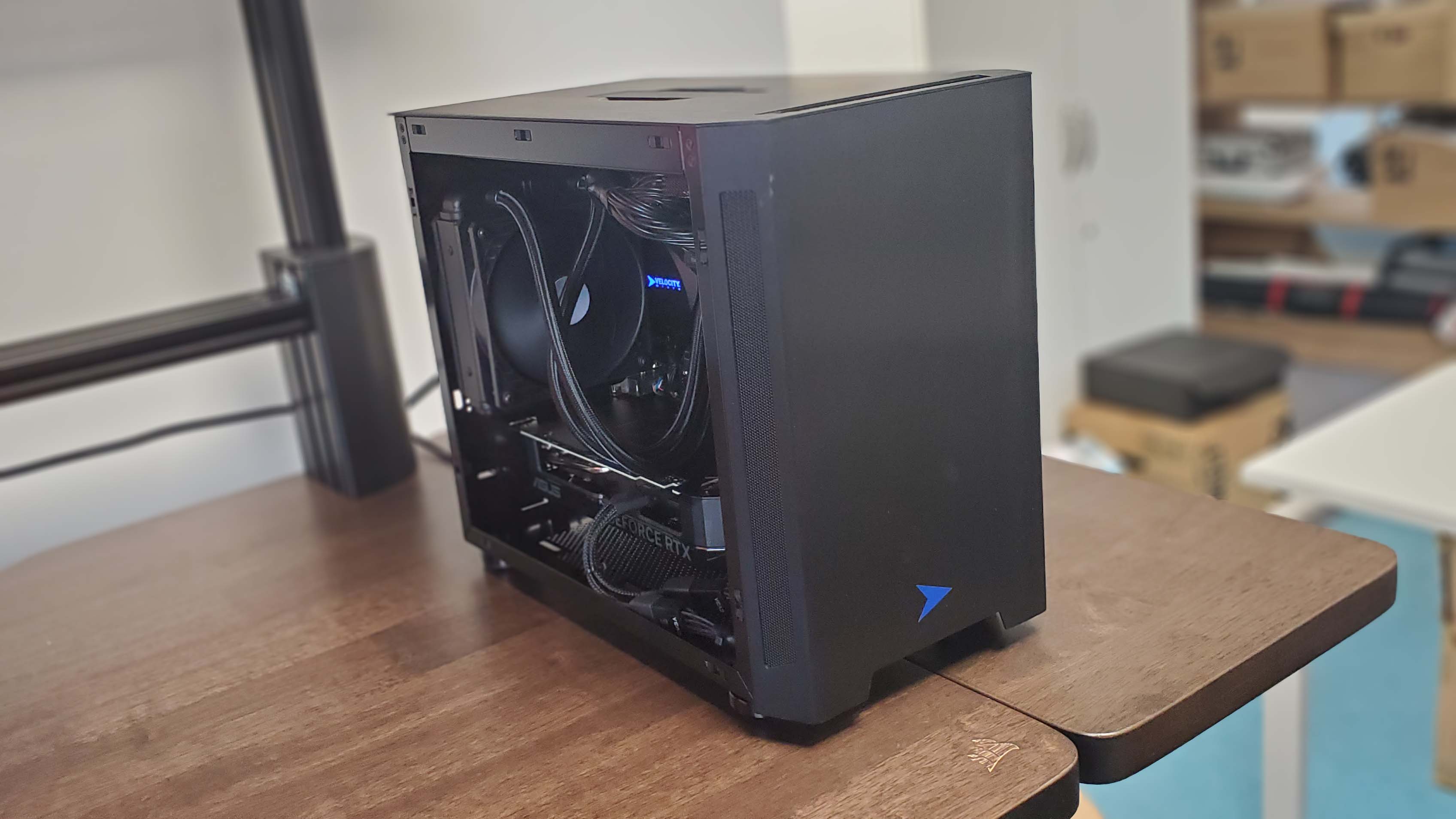
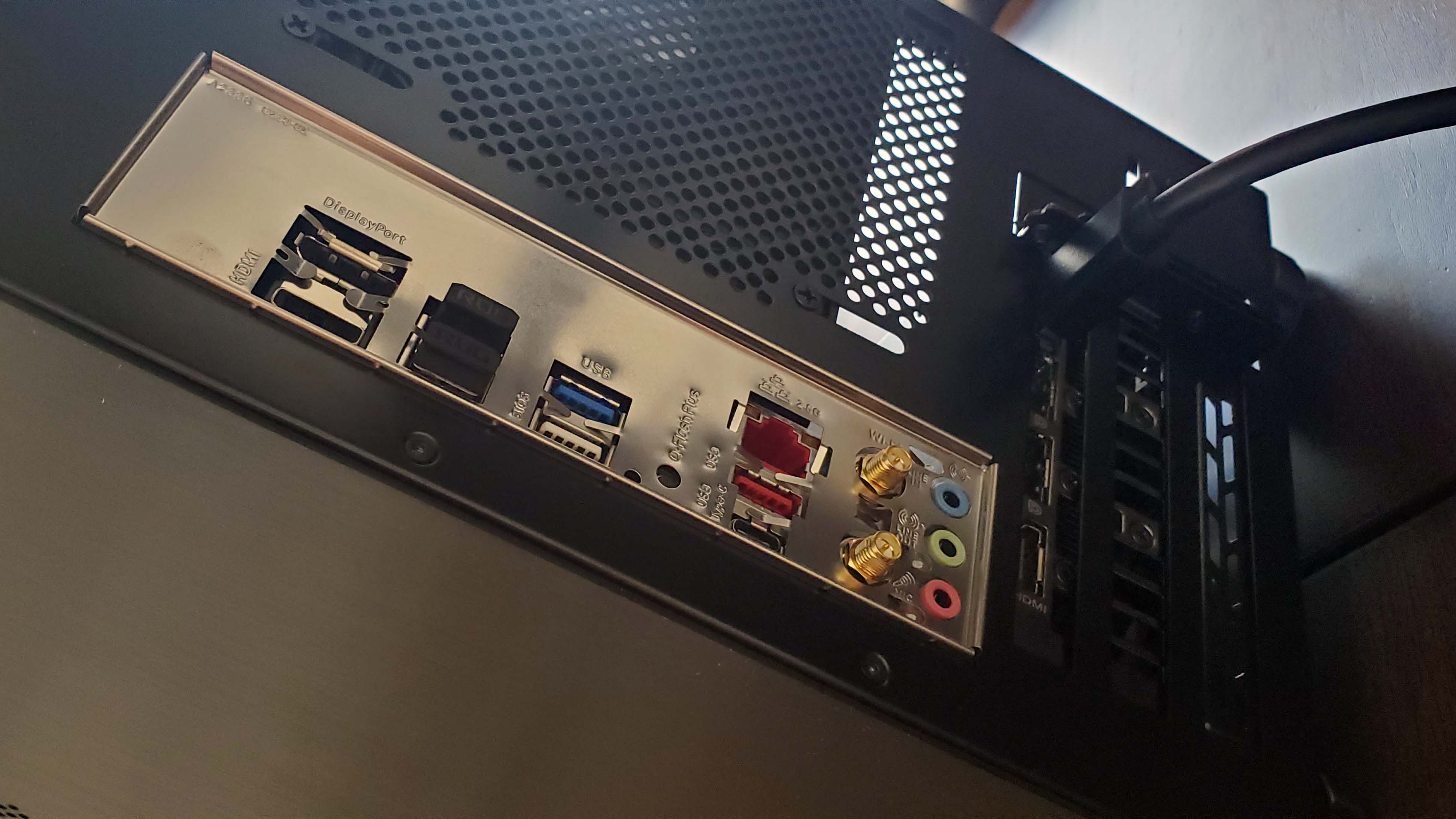

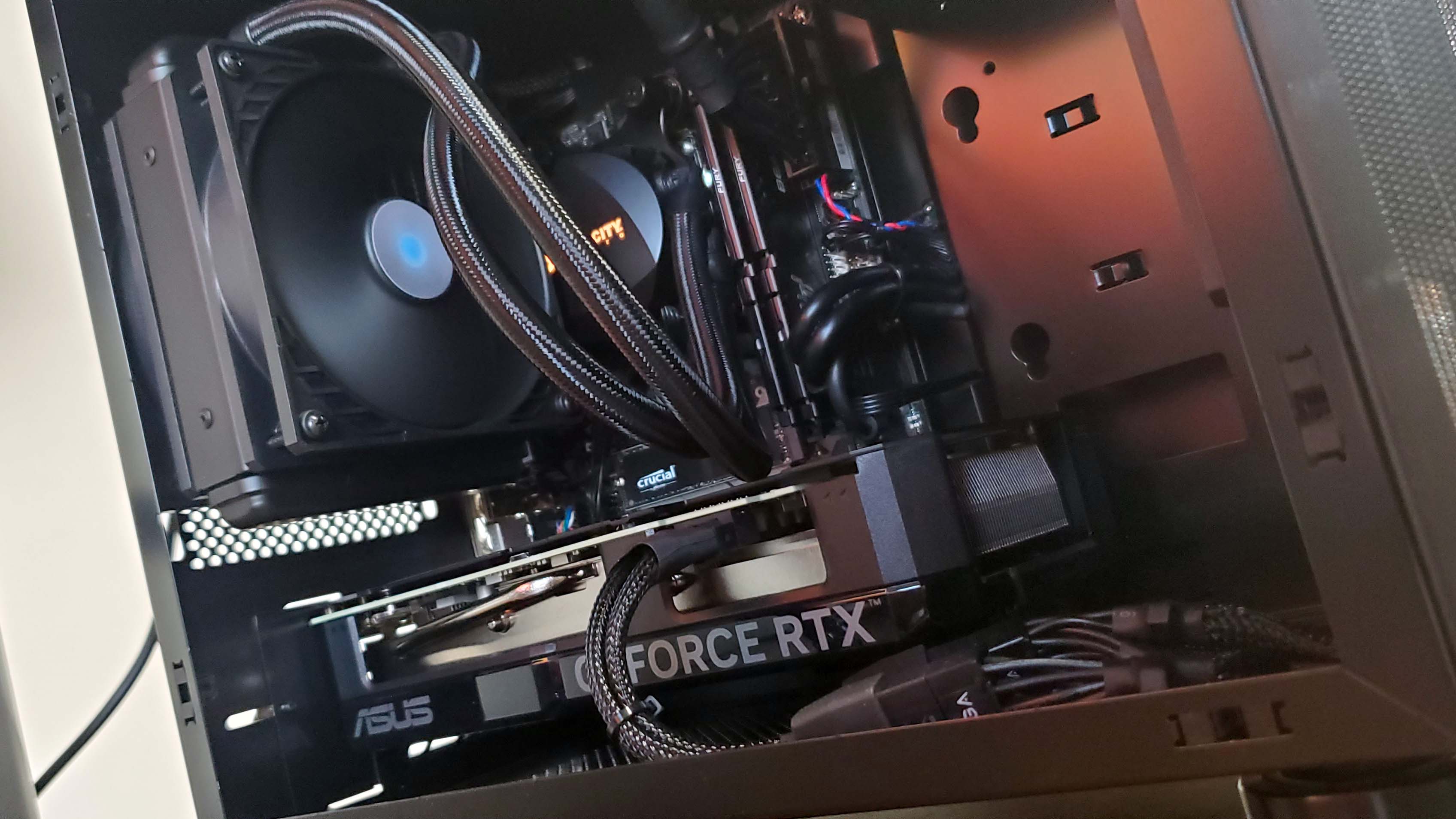
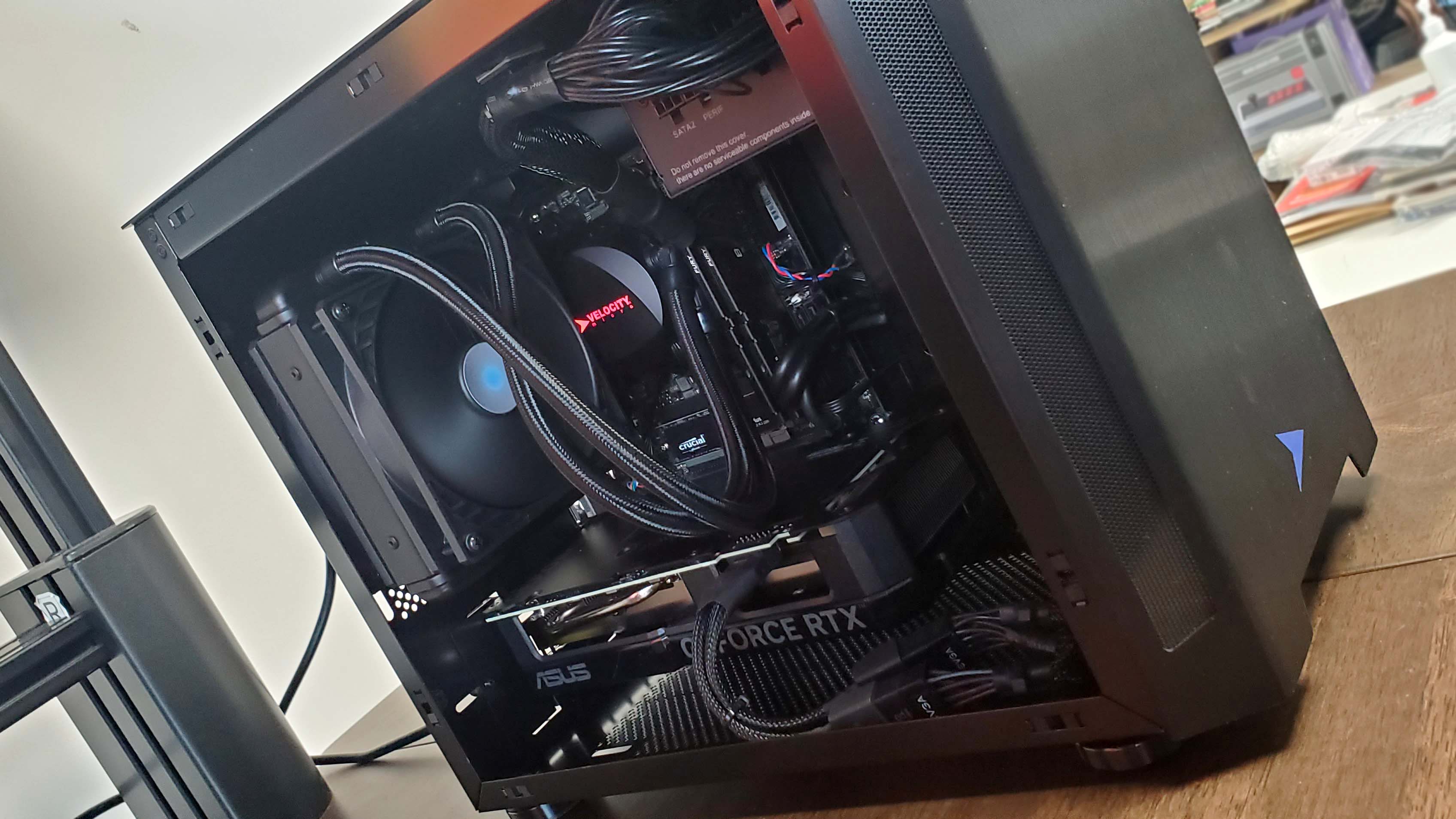
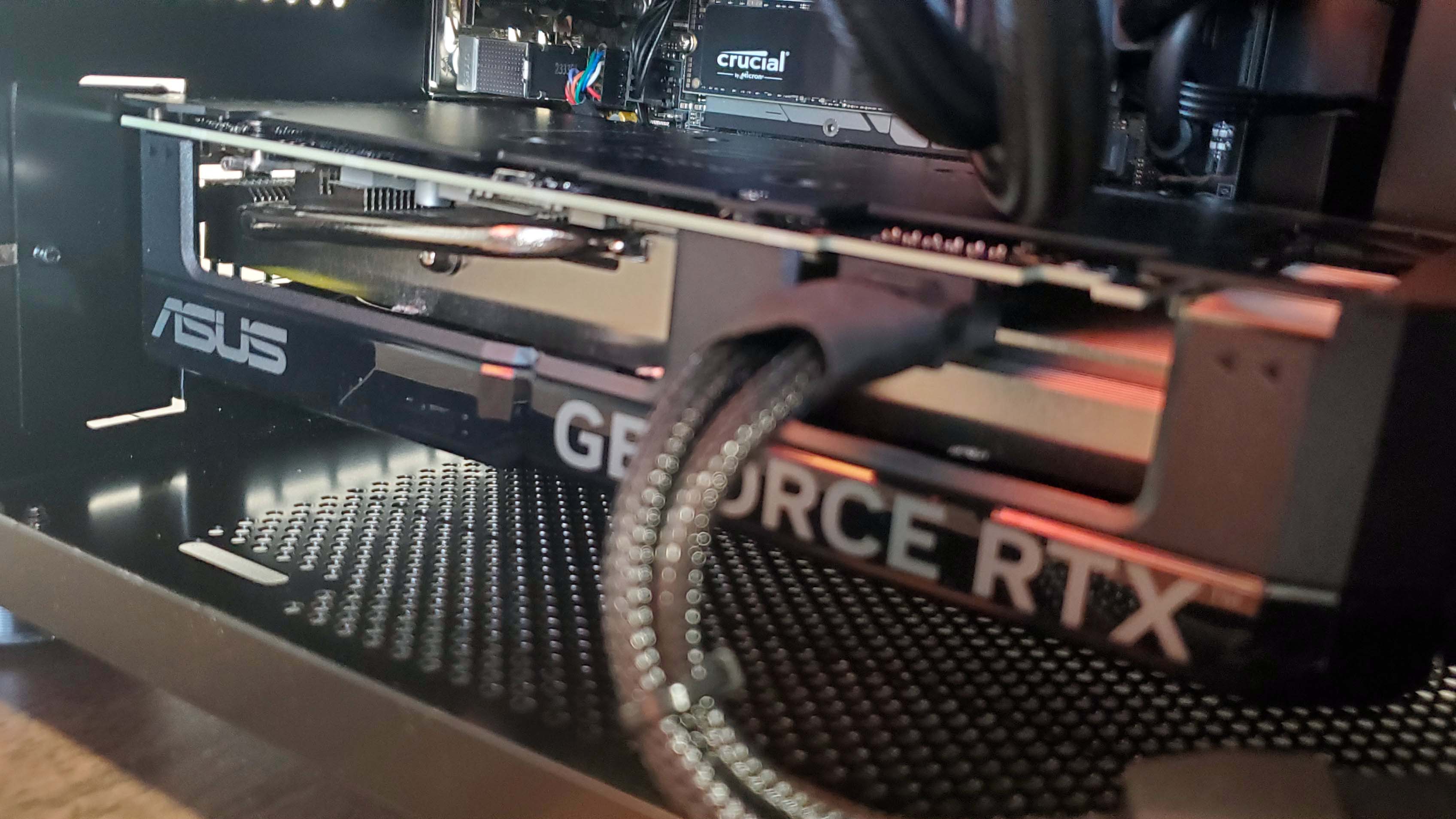
I would certainly not feel comfortable recommending you upgrade the CPU beyond something like the 9900X at most. The 5+2+1 VRM is a little lightweight, and a beefy processor, chugging down system power like black coffee on a rough morning, is going to struggle.
It's also only sporting a single PCIe 4.0 M.2 slot for your storage needs. An affordable B650I board here would have given you the option to drop a PCIe 5.0 SSD in there and given you a second slot for another M.2 SSD. As it is, you only get a further two SATA 6 Gbps plugs inside the chassis.
That motherboard choice means you're also getting a limited selection of USB ports on the rear, but ever as it were for mini ITX boards, though you do at least get a pair of Type-A and one Type-C socket on the chassis' front panel.
That niggle aside, however, the rest of the spec fits the brief. The 2 TB Crucial SSD isn't the absolute fastest, but is capacious enough to give you a lot of space for your OS and game installs, and the 32 GB of DDR5-5200 is perfect for a 2024/5 gaming PC. There's also an excellent 750 W EVGA SFX power supply in there, too. That's a PSU that will support graphics cards all the way up to the RTX 4080 Super… if you can fit one in the case.
As it is, you're getting great 1440p gaming performance out of this RTX 4070 Super-powered rig. In my benchmarks, only the Avatar performance looks off the pace, and for the life of me I can't figure out why, because the rest of the benchmarks are absolutely on par, or better than the iBuyPower machine with a similar spec.
You can see in the Baldur's Gate 3 bench where the newer CPU pushes it ahead of the iBuyPower rig, though, and in the 1% Low frame rates across the board, too. This machine will just deliver a better, smoother gaming experience.
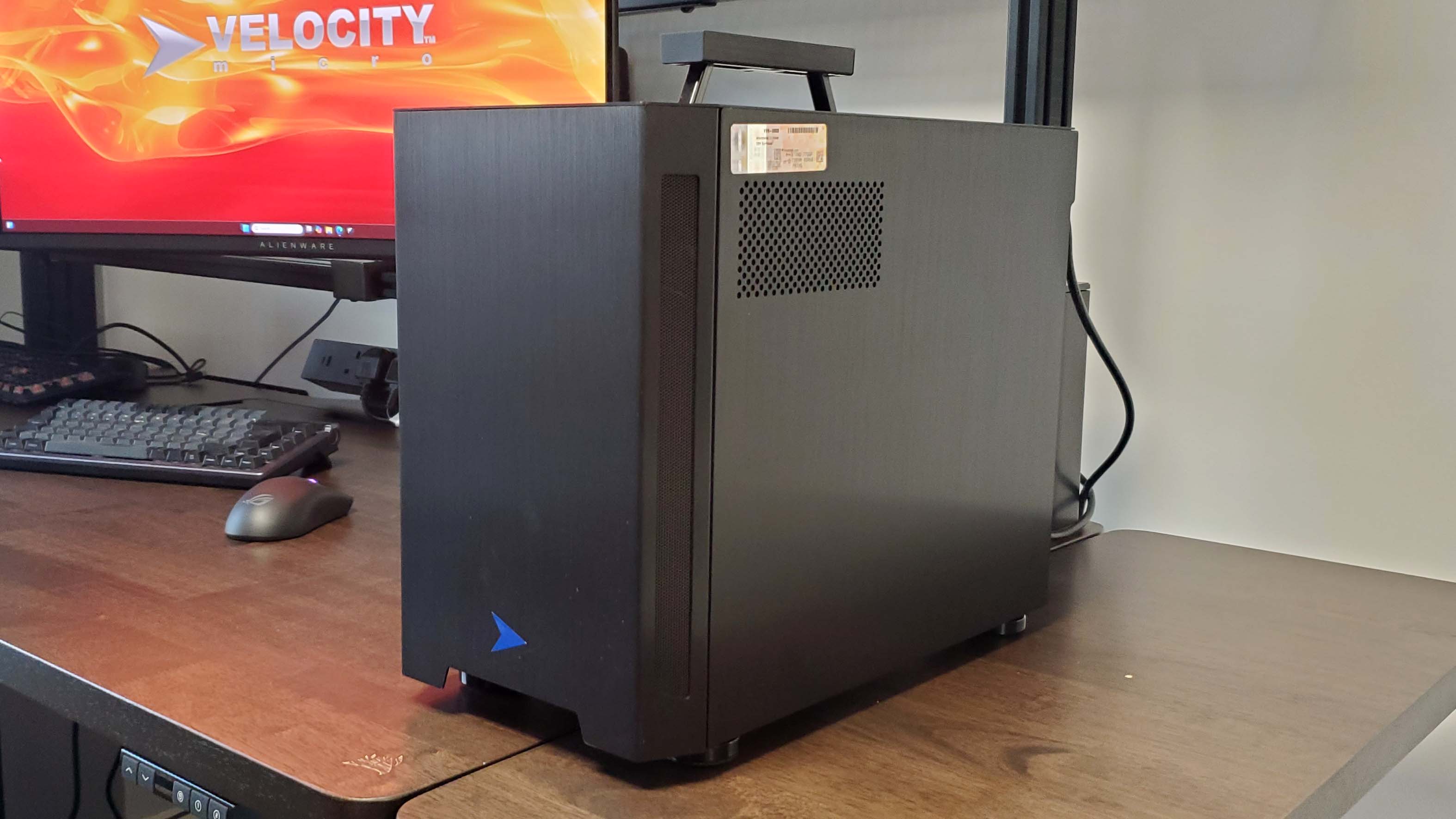
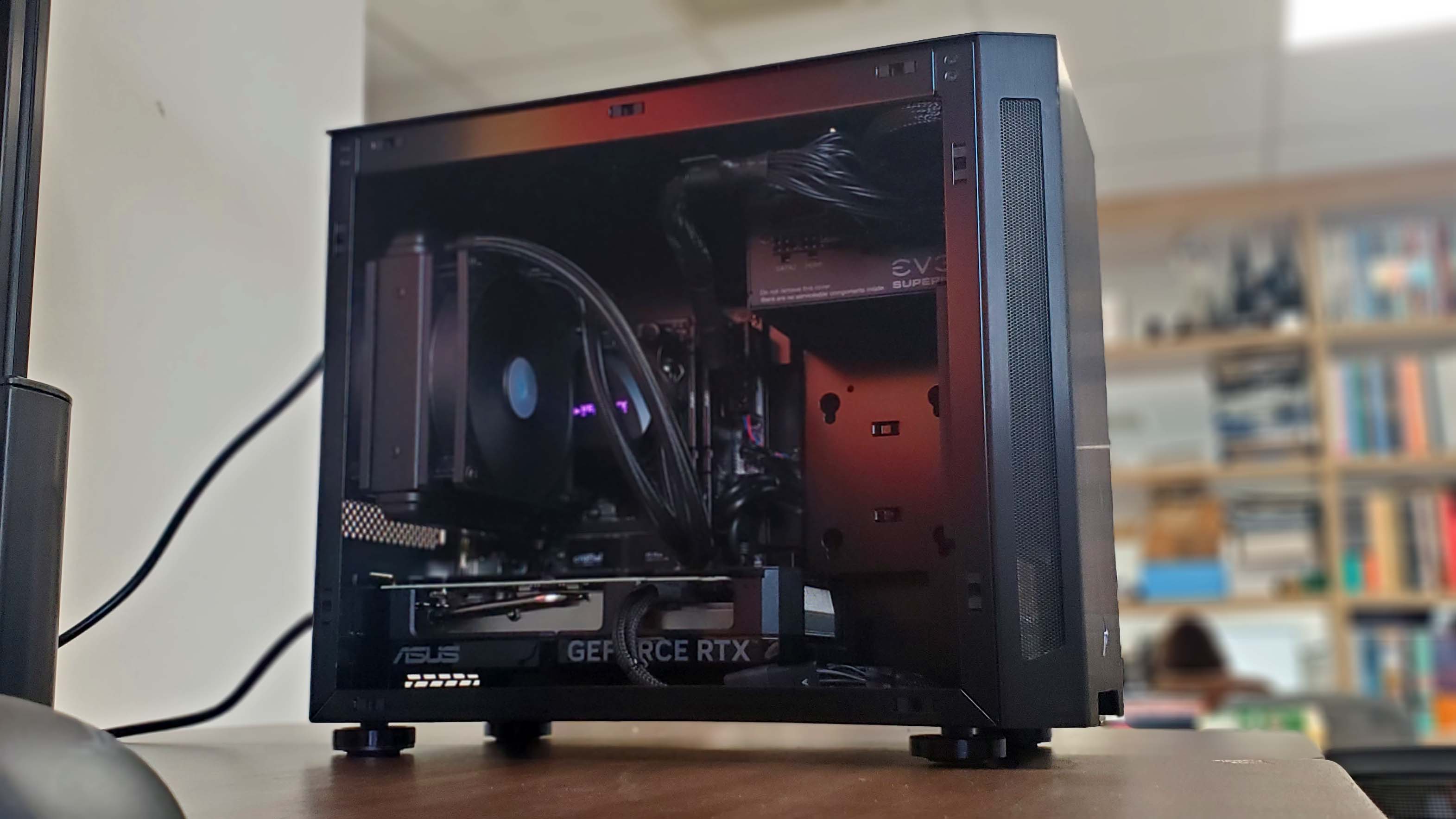
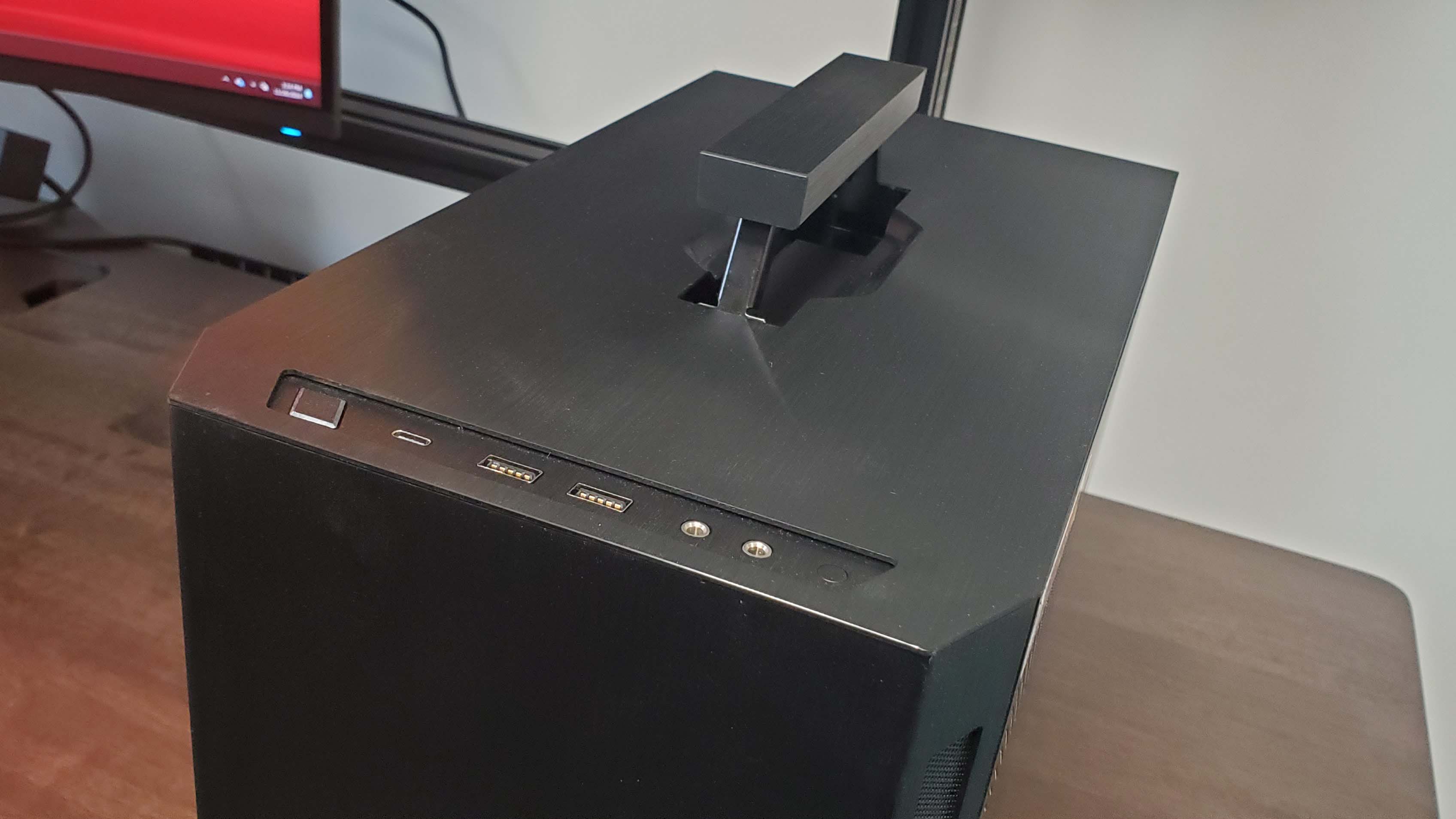
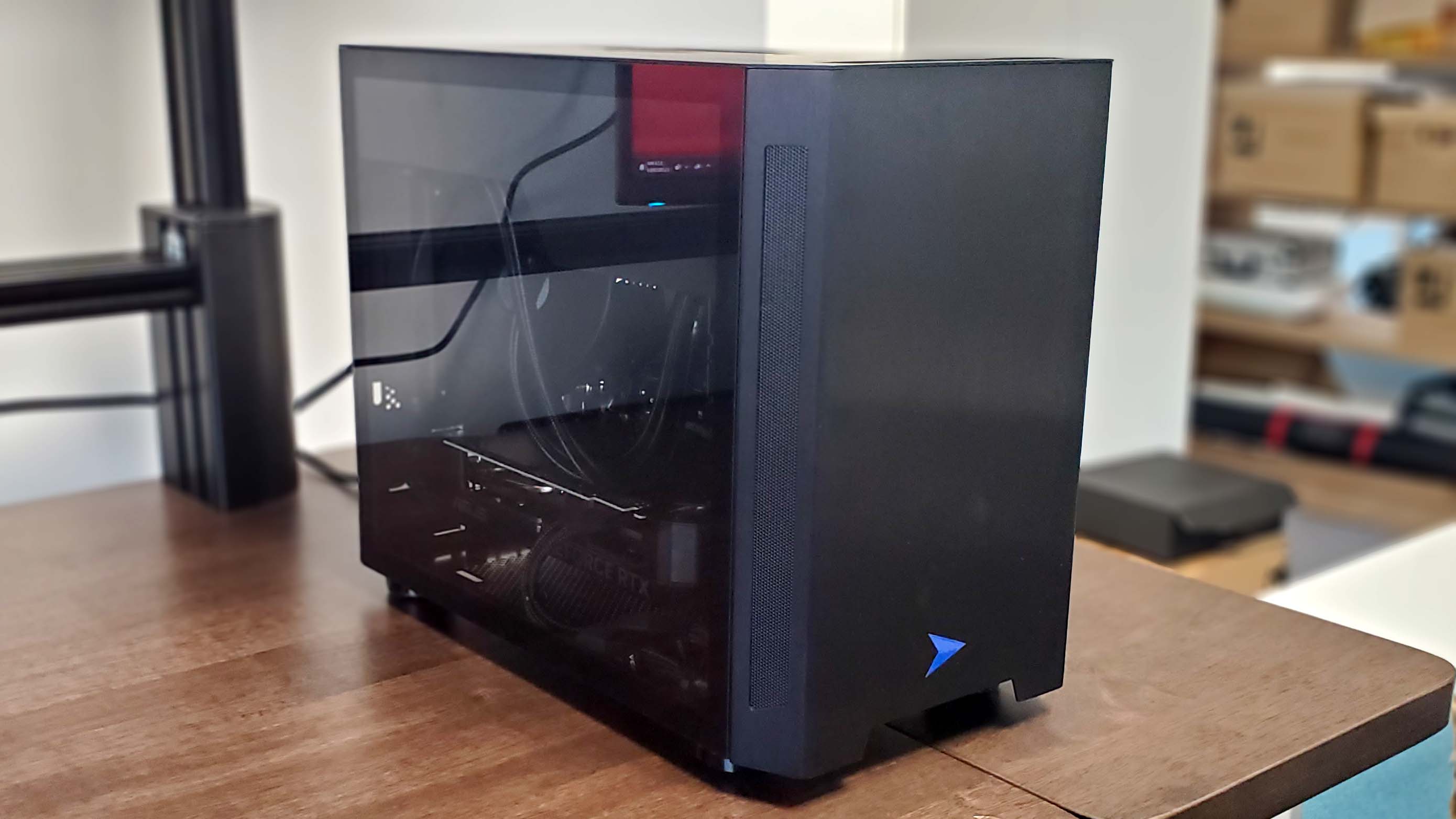
✅ You want a powerful compact machine: For a small form factor prebuilt system, the Raptor ES40 is an excellent mini PC with enough space to grow, too.
✅ You want to take your PC on the move: Did I mention it has a carry handle?
❌ You're after a PC with a ton of storage: Outside the 2 TB drive this version ships with that's it for speedy storage, with just a pair of SATA ports available for expansion.
❌ You might consider a monster CPU in the future: The A620I motherboard is the real weak point of this build and might struggle with a beefy AMD processor.
In terms of the raw processing and productivity benchmarks, too, the Raptor ES40 is a real performer. In a world with almost ludicrous core counts being proffered between the two CPU makes of Intel and AMD, it's tempting to look upon an eight-core chip as pretty low rent stuff, but it shows here how capable the Ryzen 7 9700X is both for gaming and productivity.
The kicker, however, is the price. That's often going to be the issue when you're putting a standard system against a prebuilt compact gaming PC. There is absolutely a price premium to shrinking a rig, but even so the fact the Velocity Micro machine is almost $1,000 more than the similarly specced iBuyPower might be a bitter pill to swallow.
But if you want to buy yourself a well-specced, powerful, impressively cool and quiet gaming PC then the Raptor ES40 should absolutely be on your list. You could definitely build one cheaper yourself, but that's not why you're looking for a prebuilt PC, is it?
The Raptor ES40 is a really well-specced, well-built compact gaming PC with but one real flaw. That cheap A630I motherboard holds this otherwise premium build back from complete greatness.

Dave has been gaming since the days of Zaxxon and Lady Bug on the Colecovision, and code books for the Commodore Vic 20 (Death Race 2000!). He built his first gaming PC at the tender age of 16, and finally finished bug-fixing the Cyrix-based system around a year later. When he dropped it out of the window. He first started writing for Official PlayStation Magazine and Xbox World many decades ago, then moved onto PC Format full-time, then PC Gamer, TechRadar, and T3 among others. Now he's back, writing about the nightmarish graphics card market, CPUs with more cores than sense, gaming laptops hotter than the sun, and SSDs more capacious than a Cybertruck.
